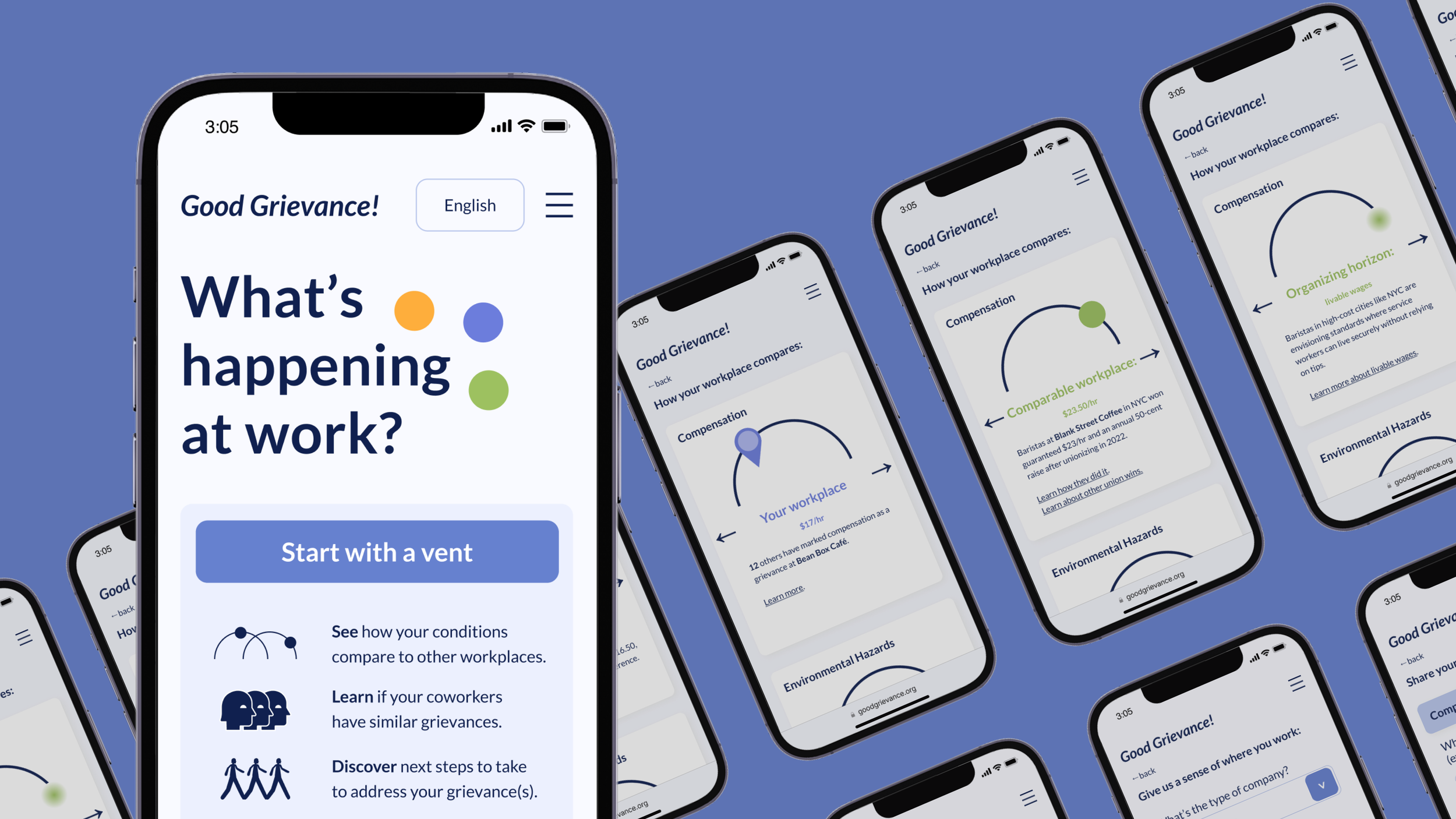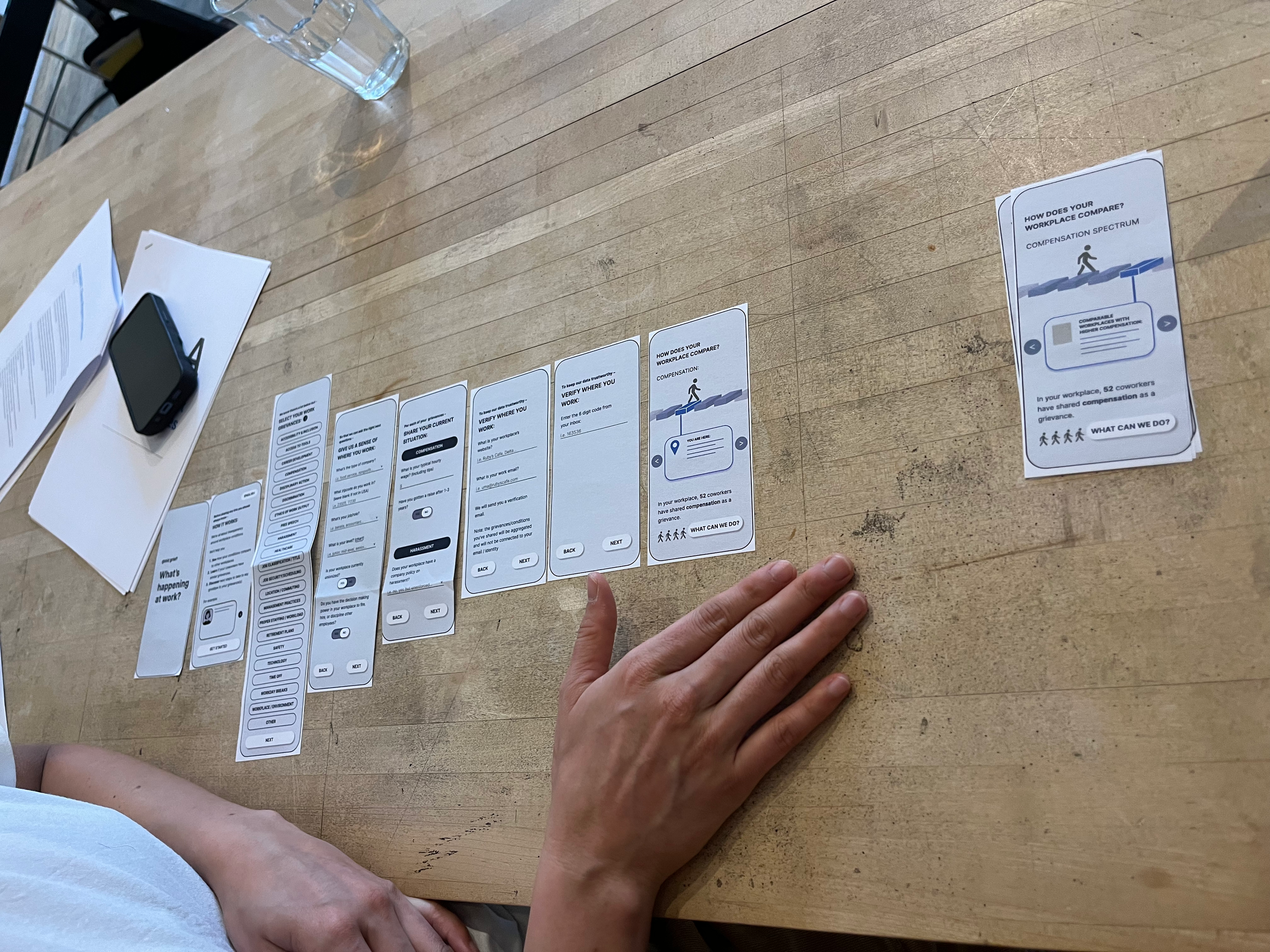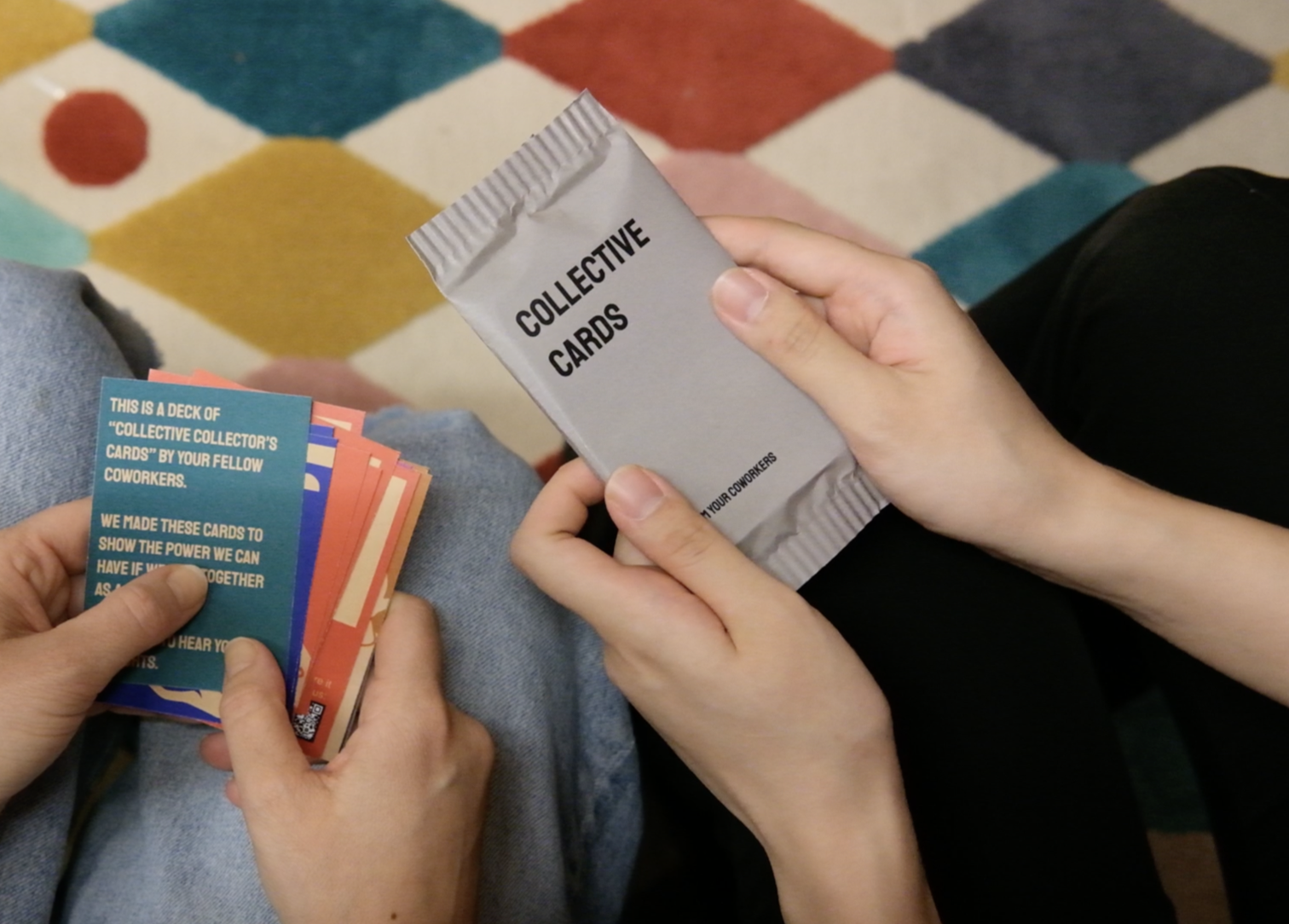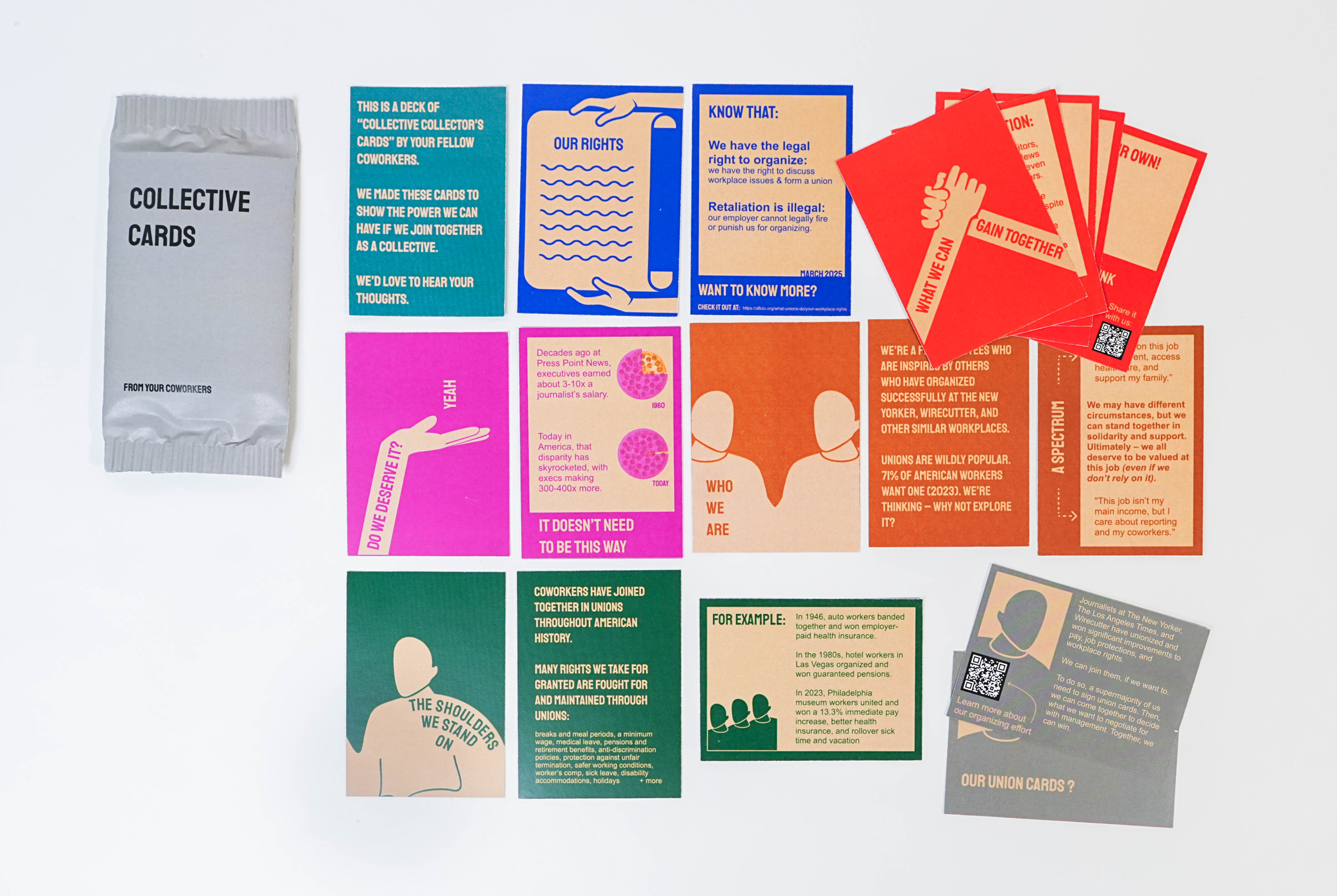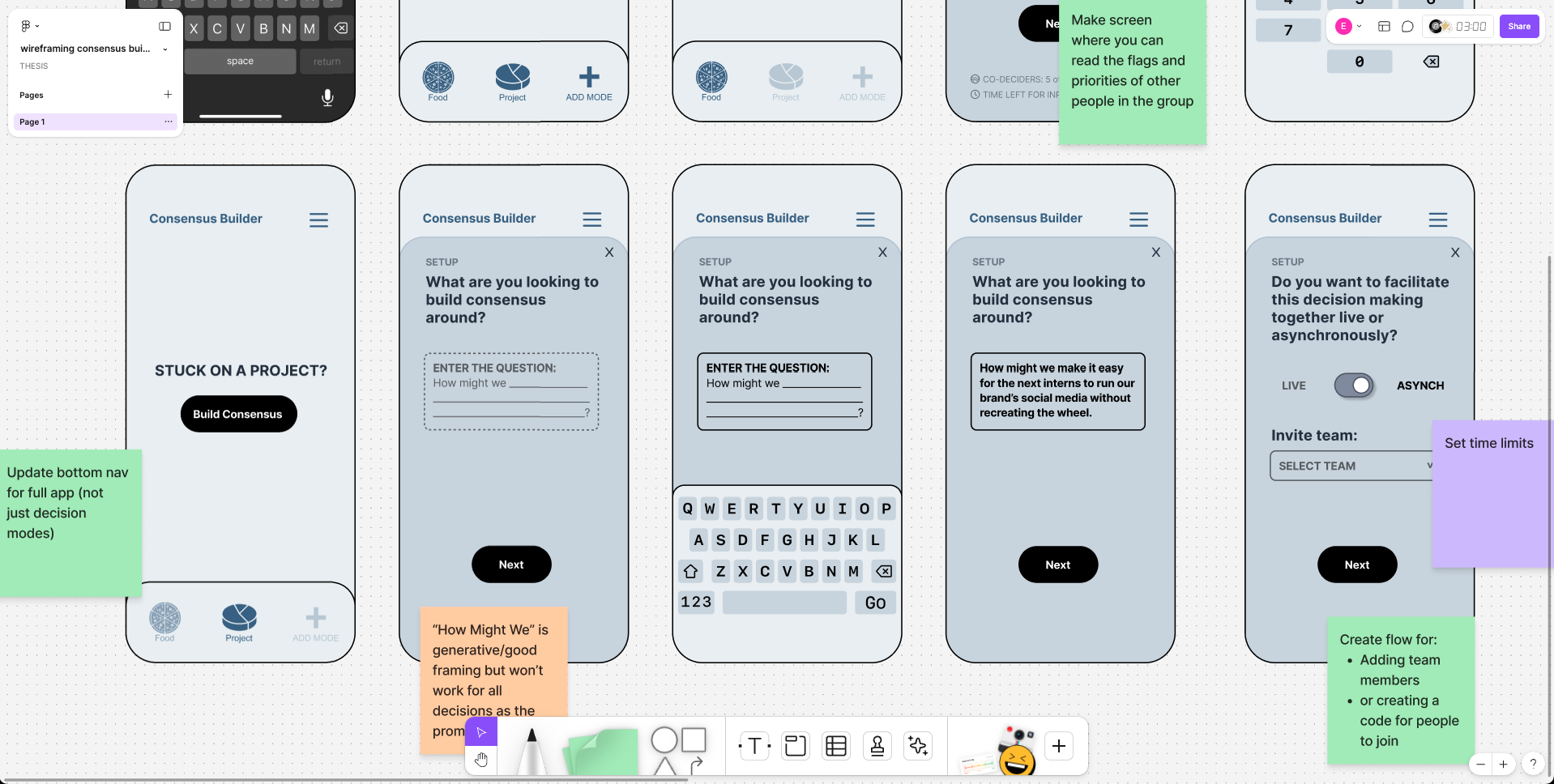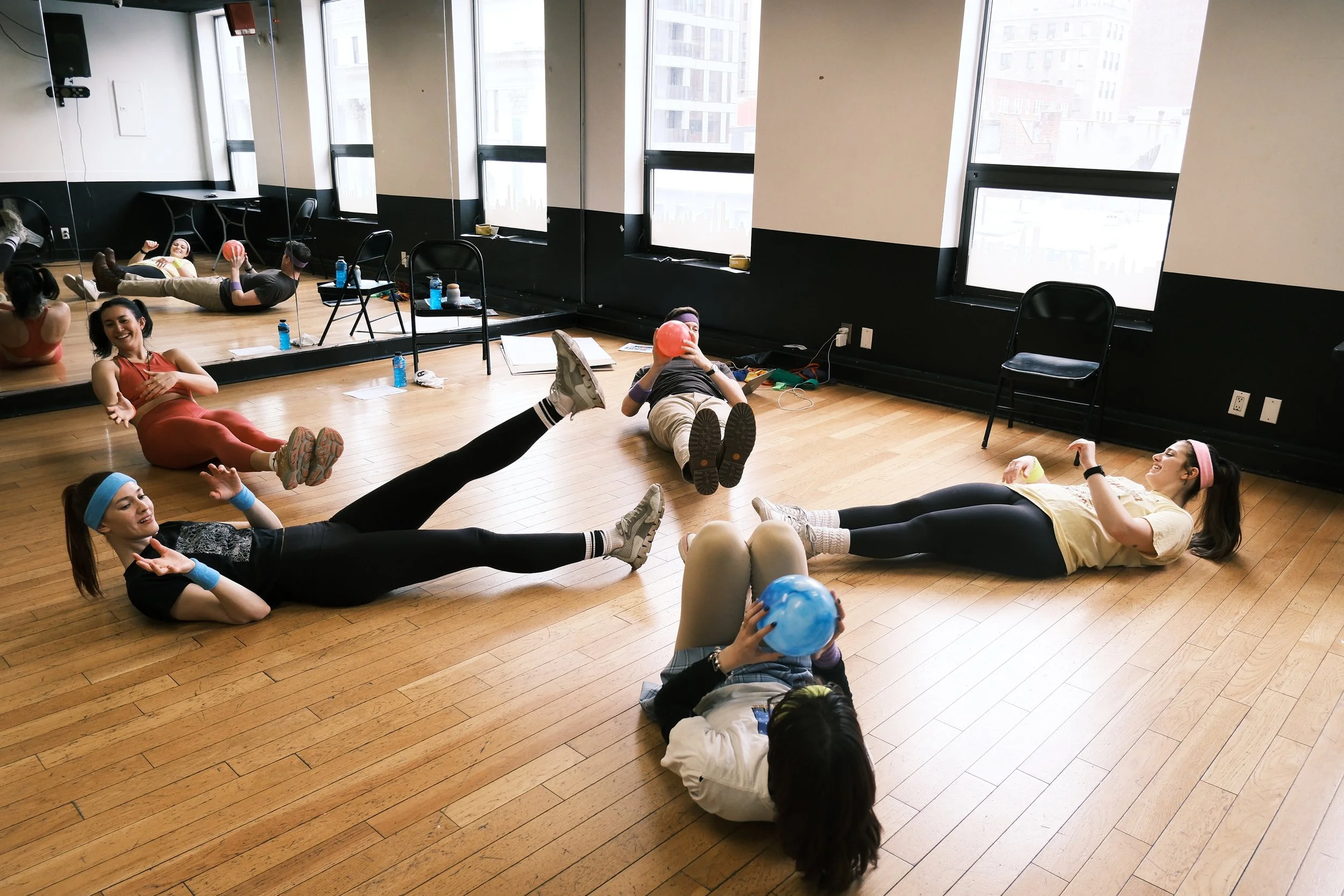Collective Power Tools: Increasing Capacity for Worker-Led Organizing
Erica Fink’s thesis, Collective Power Tools: Increasing Capacity for Worker-Led Organizing, centers workers in the design of organizing tools that build power from the ground up. Design is largely driven by industry—leaving many workers to either organize with tools not built for them or to never organize at all. Erica’s design practice asks: how might we increase capacity to create solidarity, consensus, and collective strength in ways that feel safe, energizing, and scalable? By lowering emotional and logistical barriers, the projects in her thesis aim to make the early steps of worker-led organizing and forming unions more accessible.
How might we increase capacity to create solidarity, consensus,
and collective strength in ways that feel safe, energizing, and scalable?
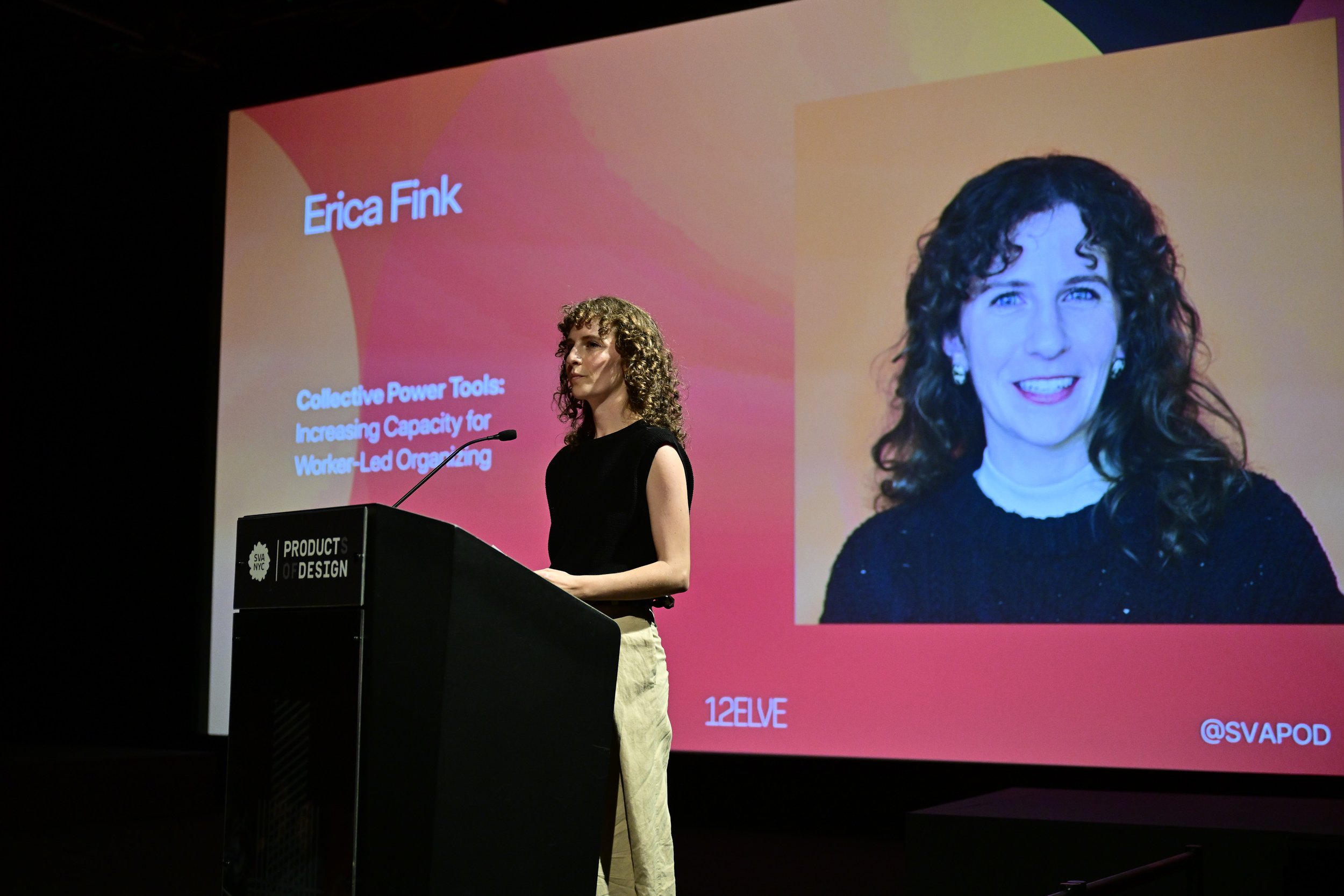
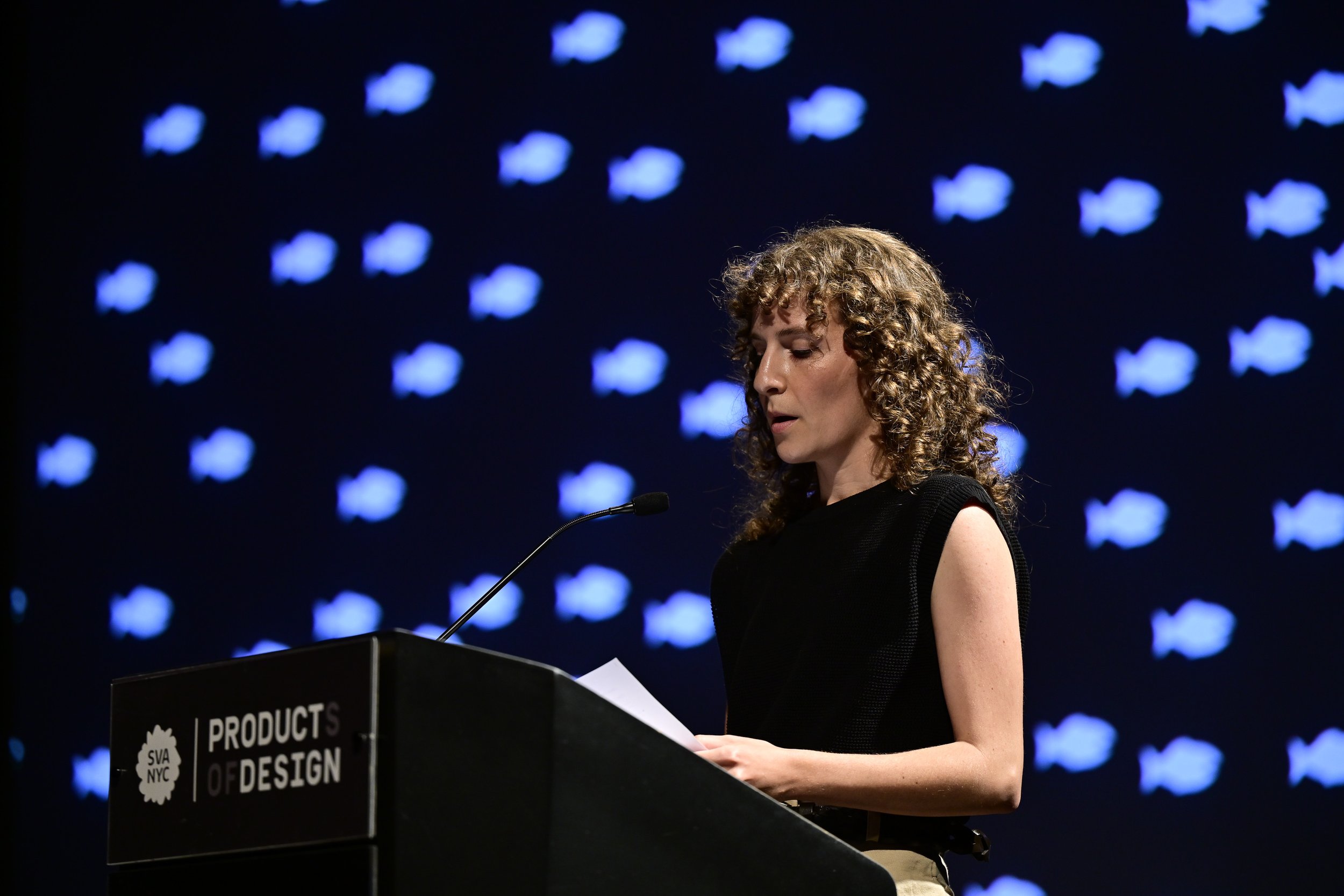
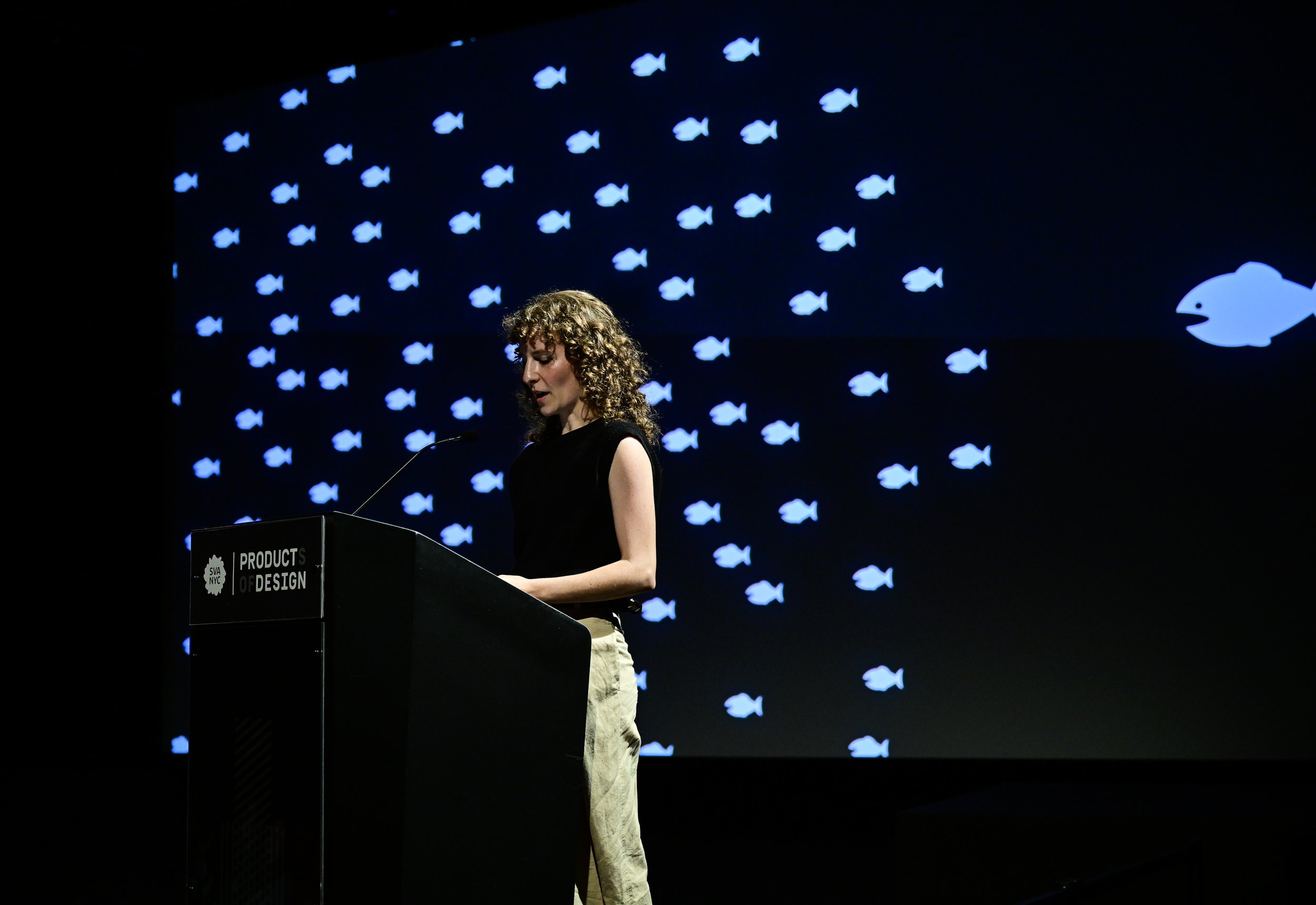
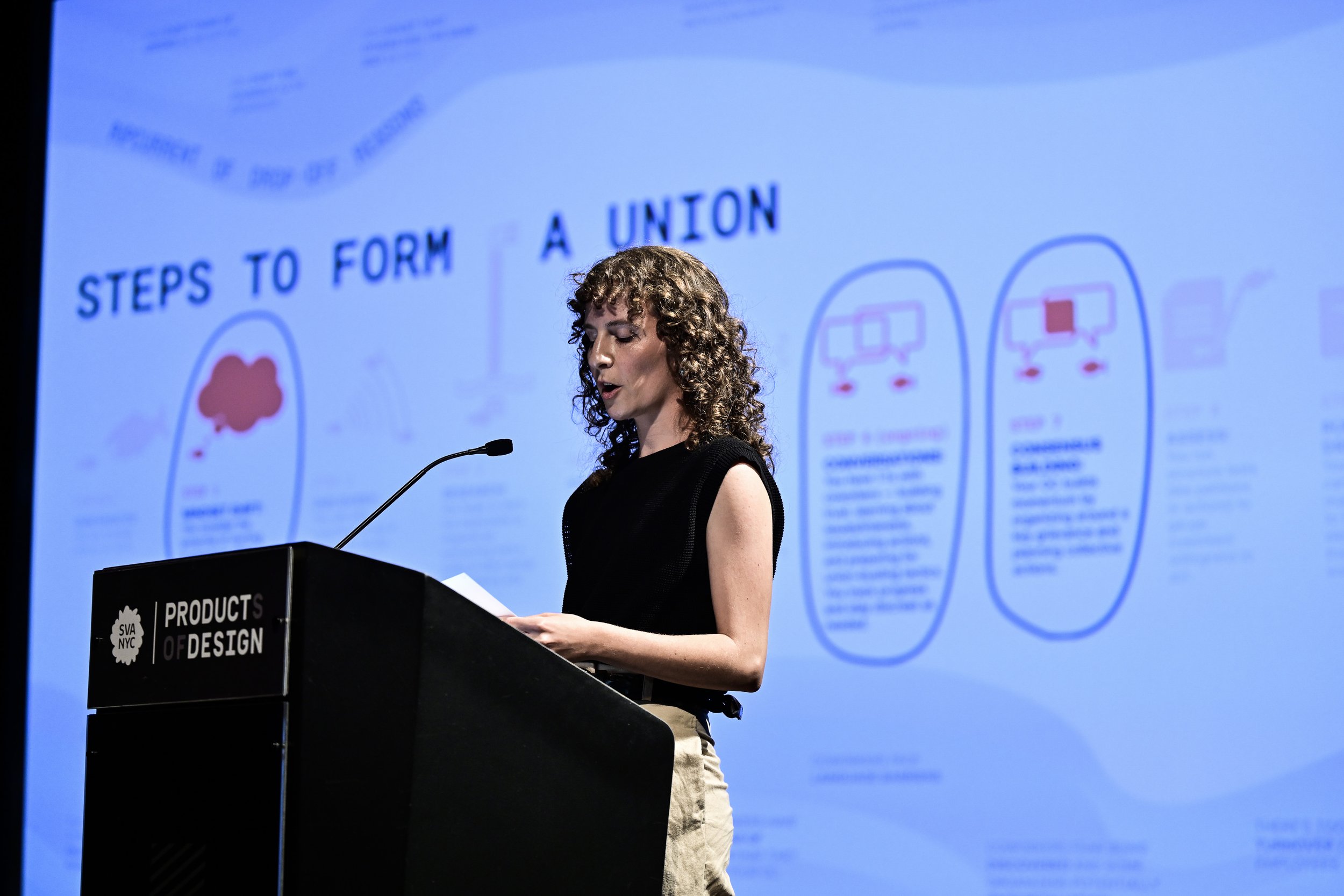
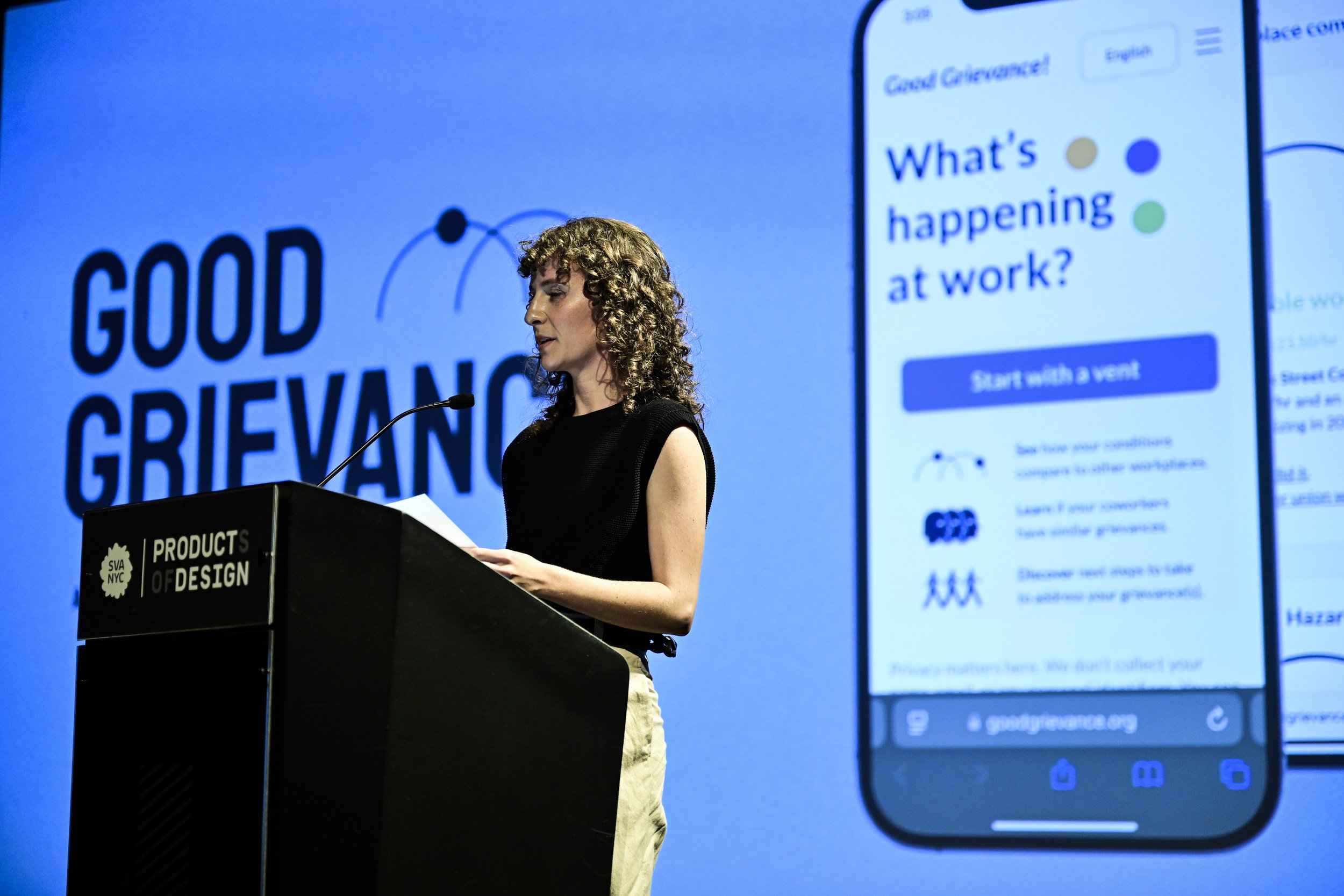
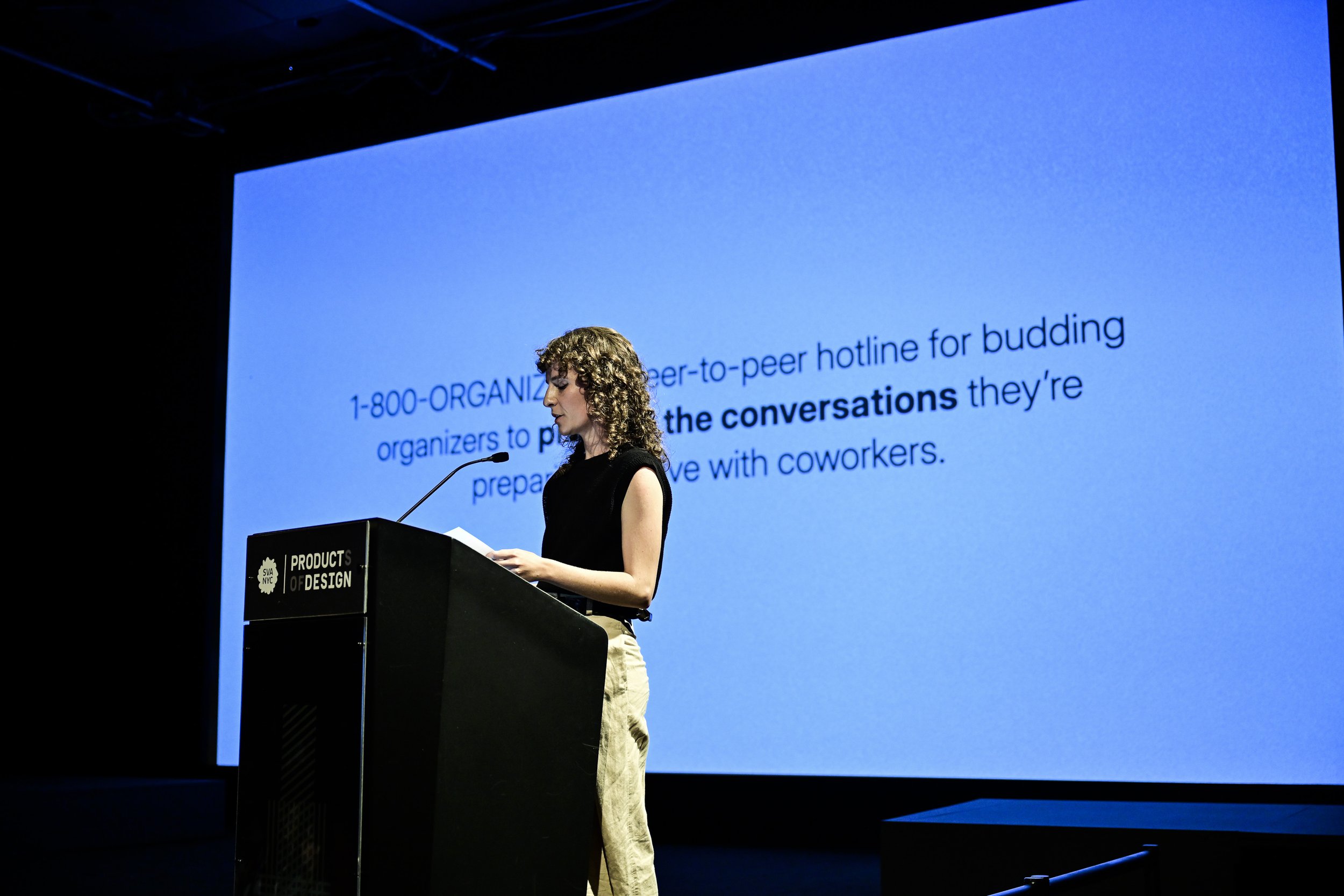
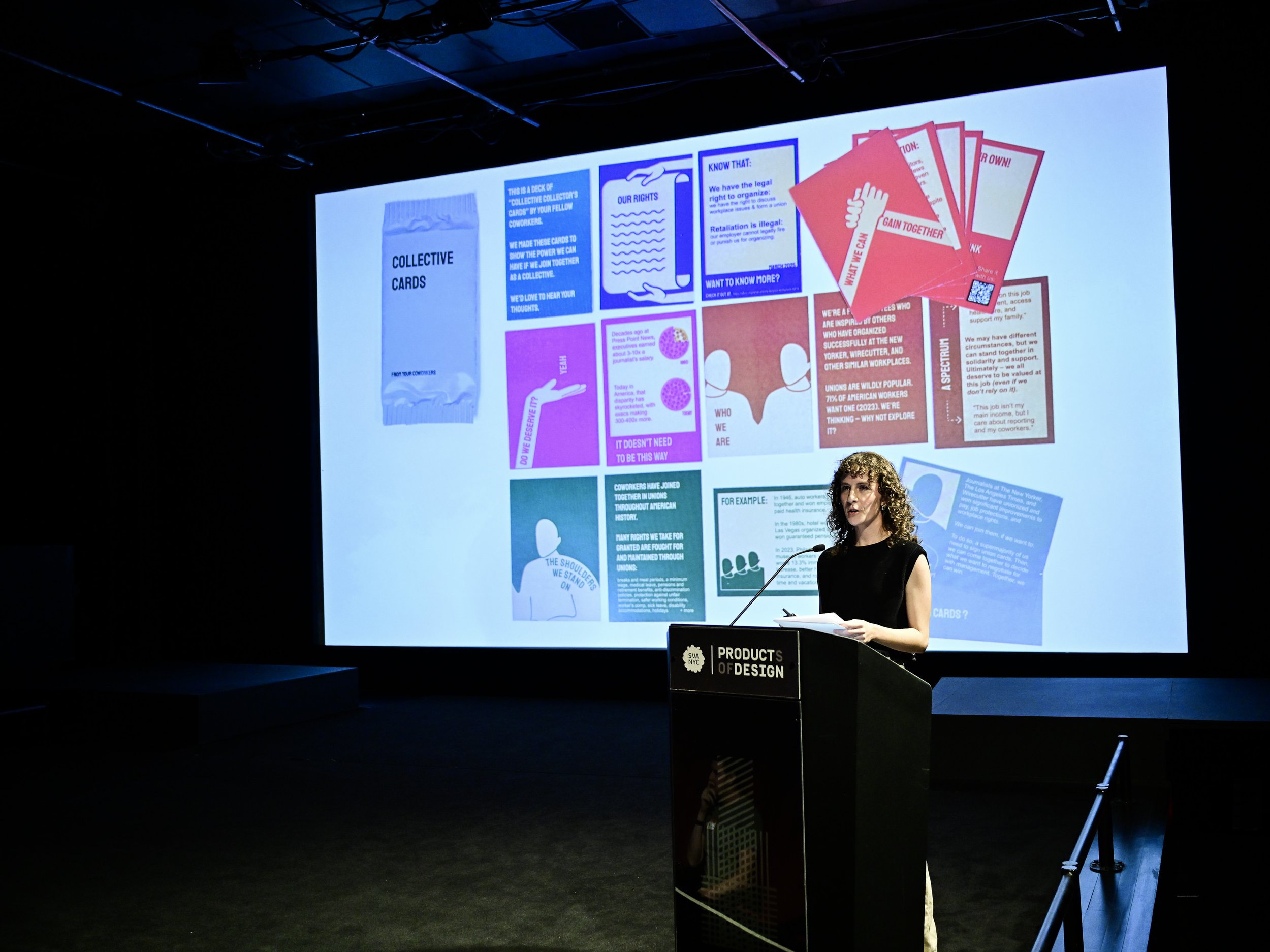
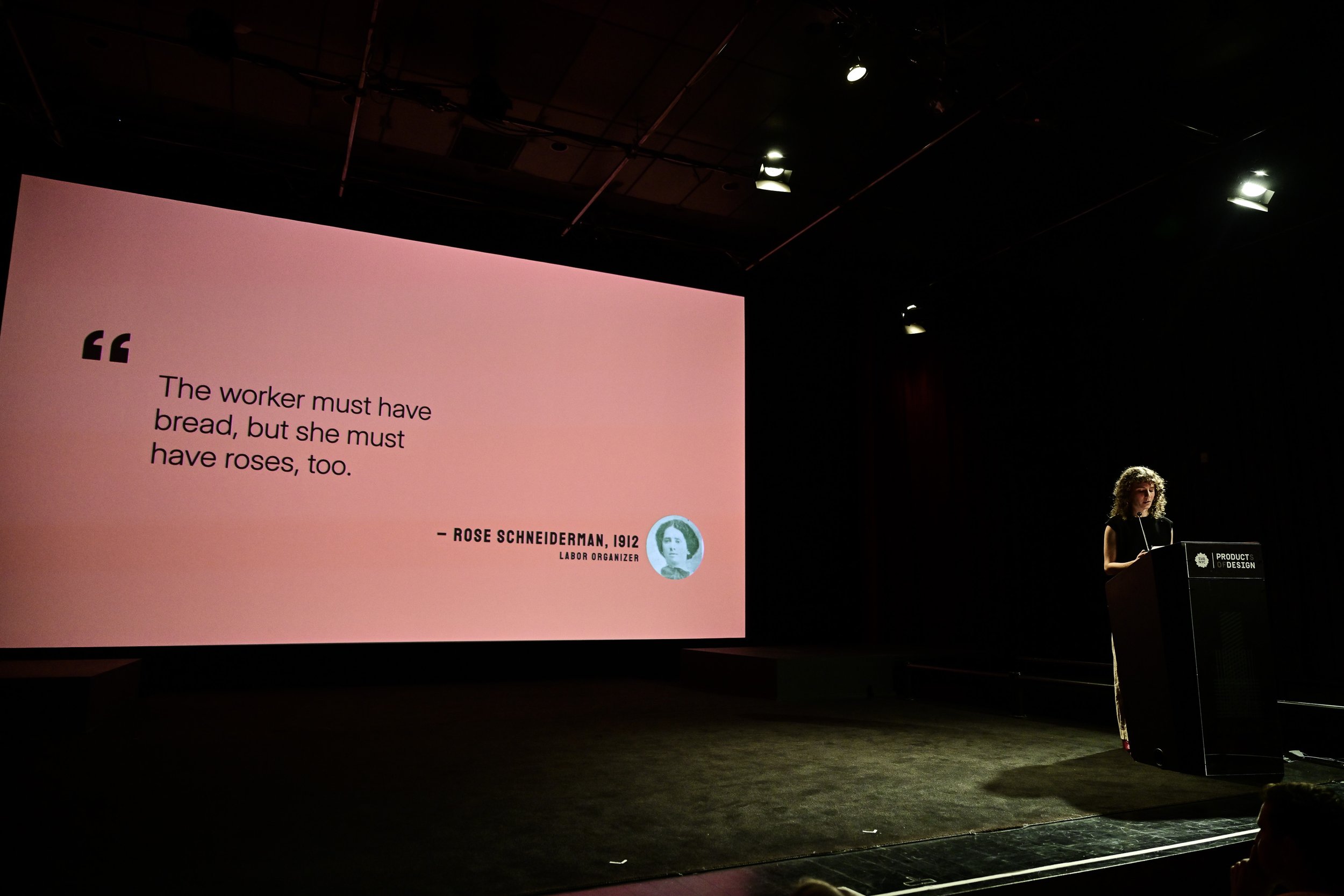
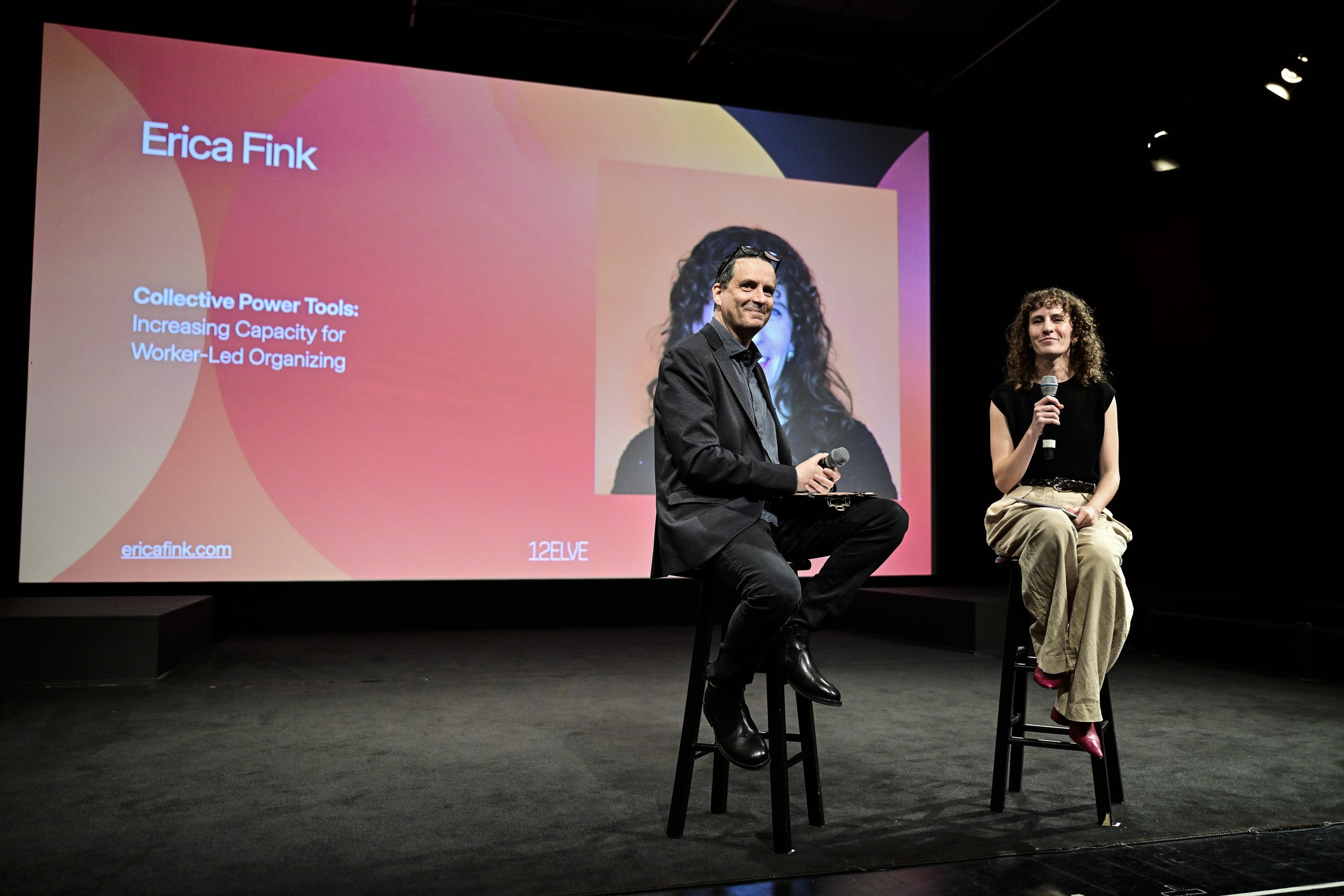
Good Grievance!
Good Grievance! is a mobile site where everyday people facing negative workplace conditions can productively vent—gaining transparency into shared struggles with coworkers and seeing how organizing at comparable workplaces has improved conditions. “By seeing themselves on a spectrum and in a historical timeline, users can realize that their conditions aren’t fixed,” Erica explains. “Change is possible.”
“Workers are always ready to talk about grievances. What would you change?
What’s not working?
The fact that workers aren’t asked is because of power.”
—Interview with Kim Diehl, National Employment Law Project
Read more about the process behind Good Grievance! on Erica’s thesis substack here.
1-800-ORGANIZE: Practice Makes Power
1-800-ORGANIZE is a peer-to-peer hotline for budding organizers to practice the conversations they’re preparing to have with coworkers—upping their skills, building solidarity, lowering anxiety, and increasing their chances of success in forming a collective. It is designed to scale up the success of existing labor trainings, where participants are often paired into breakout rooms to roleplay organizing conversations.
“Our job is to teach people the skills they need to have a voice at work,
to teach people to have conversations.”
– David Cann, American Federation of Government Employees (AFGE) Organizing Director
Read more about the process behind 1-800-ORGANIZE on Erica’s thesis substack here.
Collective Cards
Collective Cards are covert yet friendly print materials, designed in the spirit of collectible trading cards, that organizers can use as aids and leave-behinds during conversations with coworkers. Tear open a pack and find approachable information on workers’ rights, common grievances, and the value of acting together. Organizers can customize decks to fit their workplace and choose to DIY print or order them for distribution.
“The hardest part of organizing is the first point of contact. It’s not easy to do with someone you’ve only interacted with professionally, and, now, you’re having a conversation about something that implicates their finances and politics too. Anything you can do to mediate that moment is helpful, especially something physical like this.”
—Excerpt from user interview with a labor organizer in the architecture industry
Read more about the process behind Collective Cards on Erica’s thesis substack here.
Consensus Builder
Consensus Builder is a group decision-making app that helps people practice the skills of consensus in everyday settings – from choosing a lunch spot with friends to planning a trip with family. Unlike basic polls or majority voting, it invites participants to reflect on their principles, rank options, and work toward decisions where everyone feels heard, without endless unstructured back-and-forths that can stoke tension.
In workplace settings, it also provides a simple opportunity to connect on personal channels, outside of employer-owned communication tools like slack and work email, which can make the start to organizing much easier.
“Our second biggest challenge was decision making processes… I thought maybe with decision making we were moving too slow. The build up of energy was becoming poisoning in some ways. We were becoming resentful of each other… We needed support to learn together what our decision making mechanism would be.”
—Excerpt from user interview with a labor organizer in nonprofit
Read more about the process behind Consensus Builder on Erica’s thesis substack here.
Organizing Gym: Exercise (Y)our Power
Organizing Gym is a workout class that teaches the fundamentals of unionizing through movement. Each exercise in the class represents a step in the organizing process – from social mapping to escalating collective actions – helping participants gain an overall sense of the process and walk away with it as muscle memory. Designed as a curriculum, “Organizing Gym” can be offered by unions and worker centers at scale through partnership with local fitness instructors. The class is adaptable for different gym setups and offers an energizing, embodied entry point into organizing.
“It wasn’t stressful! When you talk about topics like this it can be very stressful and when you explain it in an academic way people may get a little bit lost. But this way is more fun, it’s less stressful, it feels more straightforward and I think the kinesthetic side of it makes it easier for people to get the concept.”
— Excerpt from user interview with a labor organizer in meatpacking industry
Read more about the process behind Organizing Gym on Erica’s thesis substack here.
For a deeper look into Erica’s thesis process, research, and reflections, explore the following links:
Thesis Repository on Notion – a comprehensive archive of Erica’s thesis development
www.ericafink.com – Erica’s design website

